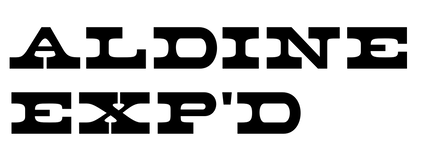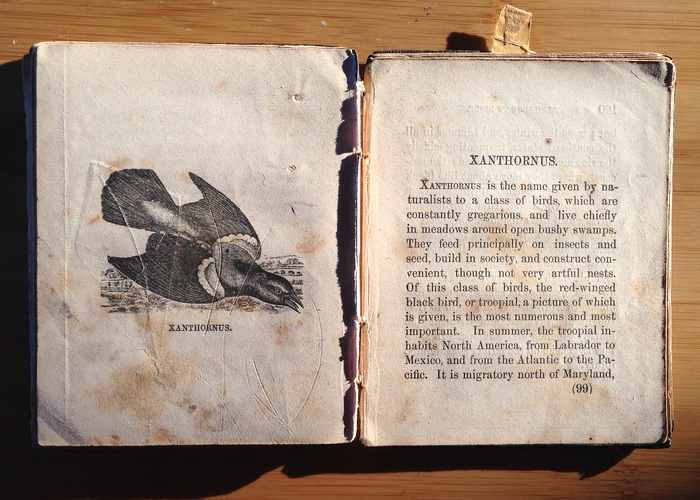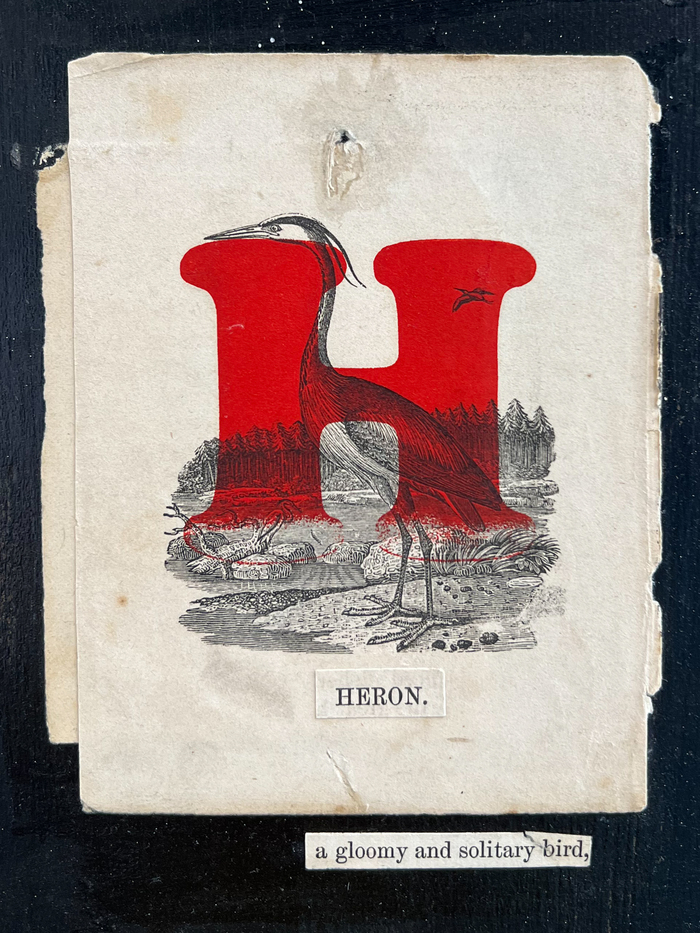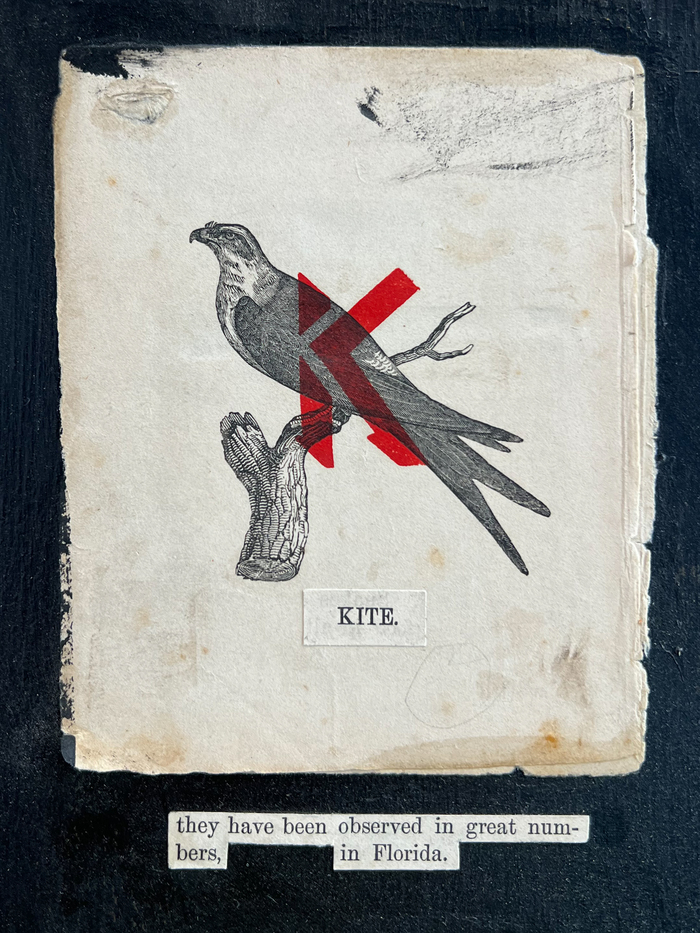Alphabet of Birds

Source: www.flickr.com K. James Henderson. License: CC BY-NC-SA.
The full Alphabet of Birds




Hamilton No. 258 (Sample unavailable)



Hamilton No. 234 (Sample unavailable)







Antique Tuscan No. 9 (Sample unavailable)

An Alphabet of Birds is a vintage book published by Lippincott, Grambo, & Co., Philadelphia, in 1854. 163 years later, in 2017, Kent Henderson transformed a worn copy into something new and spectacular: for his Alphabet of Birds, he sliced and diced the pages, and overprinted the engravings with a single red letter. Henderson then pasted the 26 pages plus text clippings and the title onto a wood panel measuring 40×30 inches. The result is a unique artwork that appeals to bird lovers and typophiles alike. It was recently sold in a fundraiser for Chicago Art Department.
The original book from 1854 was set in one of the generic romans often named Modern or Scotch. All other fonts used for this piece come from the wood type collection at Depression Press Mfg. & Ink, Inc., a letterpress studio in Chicago, operated by Henderson together with Dud Lawson. The title is set in Clarendon Extended, with Aldine Expanded used for “of”. Henderson didn’t really intend this to be a type specimen piece at the time it was made. That’s why he didn’t document what typefaces he was pulling. Nevertheless he was able to identify most of the wood type used for the alphabet pages:
A for Albatross — an unidentified bifurcated Tuscan, 12 line
B for Bustard — possibly Hamilton No. 258, 24 line. Source: Hamilton’s Wood Type, Catalog No 14 (1899)
C for Condor — Grecian, 15 line (by Cooley), via Printing Museum
D for Dove — Balloon, 12 line (by American Wood Type Mfg. Co.), via Printing Museum
E for Eagle — Ancient Gothic, 6 line, via RRK Collection
F for Fly Catcher — possibly Hamilton No. 234, 15 line. Source: Hamilton’s Wood Type, Catalog No 14 (1899)
G for Grouse — see C
H for Heron — Cooper Black, 15 line, via Printing Museum
I for Ibis — see F
J for Jager — Aldine, 12 line, via RRK Collection
K for Kite — Shadow, 12 line (by American Wood Type Mfg. Co.; currently cut by Virgin Wood Type). Better known under the name used by Ludlow for the metal version, Umbra.
L for Lyryrus — unknown Gothic Condensed, 30 line
M for Magpie — No. 500, 15 line (by Page), via RRK Collection
N for Nightingale — De Vinne, 12 line, via RRK Collection
O for Owl — Antique Tuscan, 24 line (no mark), via RRK Collection
P for Partridge — see E
Q for Qua Bird — see F
R for Rice-Bird — see D
S for Spoonbill — see H
T for Tufted Titmouse — see B
U for Upupa — No. 560, 24 line (Hamilton)
V for Vulture — Goudy Extra Bold, 12 line (Hamilton)
W for Waxen-Wing — Antique Tuscan No. 9, 20 line (Page & Co stamp), via RRK Collection
X for Xanthornus — Cheltenham Outline, 6 line (no mark)
Y for Yellow Legs — French Clarendon, 12 line, via RRK Collection
Z [no Z bird] — see O
To marvel at all pages in detail, head over to the Flickr account of Depression Press.

Source: www.flickr.com K. James Henderson. License: CC BY-NC-SA.
The title is set in Clarendon Extended, 5 line (no mark), via RRK Collection. “Of” is in Aldine Expanded.

Source: www.flickr.com K. James Henderson. License: CC BY-NC-SA.
Computer-Aided Design? Condor, Albatross, Dove!

Source: www.flickr.com K. James Henderson. License: CC BY-NC-SA.
The source material: a battered copy of An Alphabet of Birds, 1854, 5×6 inches

Source: www.flickr.com K. James Henderson. License: CC BY-NC-SA.
“Heron: a gloomy and solitary bird.”

Source: www.flickr.com K. James Henderson. License: CC BY-NC-SA.
“Kite: they have been observed in great numbers, in Florida.”

Source: www.flickr.com K. James Henderson. License: CC BY-NC-SA.
The engravings are signed with two names, Croome (William Croome), and “J. Green…” (?).
This post was originally published at Fonts In Use